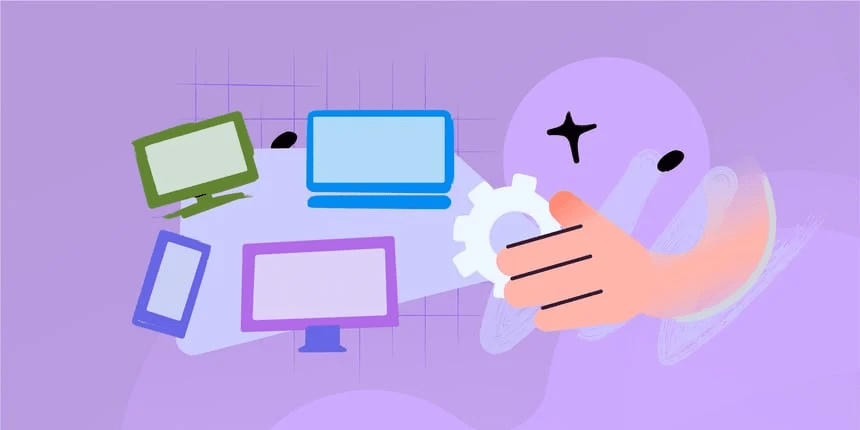With any change, there are risks. Change Management risks refer to potential negative outcomes that could occur during the process of implementing a change. These include things like operational disruptions, financial losses, or security vulnerabilities. When managing a change, it’s crucial not just to focus on the change itself but also to plan for and mitigate these risks.
Effective Change Management requires a proactive approach. That means anticipating potential problems and having strategies in place to minimize or avoid them. Without this, even a well-intended change can lead to unexpected issues that jeopardize the entire initiative.
Types of Change Management risks
Change introduces uncertainty, and with that comes the possibility of specific risks that can disrupt the process.
What are the negative effects Change Management can have? Here are some of the most common Change Management risks organizations face:
1. Operational disruption
Changes to systems, processes, or structures can disrupt day-to-day operations. For example, implementing a new software system without proper testing or training could lead to downtime, errors, or delays. Critical functions might fail or slow down, impacting productivity and customer service.
2. Data security risks
When systems are changed or updated, security vulnerabilities can emerge. For example, new software might have weak points that weren’t present in the previous system, making it easier for hackers to exploit. If sensitive data is exposed, the organization could face severe consequences, including legal action or loss of customer trust.
3. Financial risks
Budget overruns are common in poorly managed change initiatives. Costs can spiral if the scope of the change expands unexpectedly or if there are delays in implementation.
This could mean the project ends up costing far more than anticipated, impacting the organization’s finances. Additionally, if the change disrupts revenue-generating activities, there could be a direct financial hit.
4. Regulatory compliance risks
In some industries, changes need to meet strict compliance standards, with both legal and regulatory requirements. Failing to do so could result in fines, penalties, or legal challenges. For instance, if an organization implements a new system without ensuring it complies with data privacy laws, it could be exposed to legal risks.

5. Reputation risks
A poorly executed change can harm an organization's reputation. If customers or the public are affected by service disruptions or notice a drop in quality, they might lose trust in the company. This can lead to long-term damage, such as losing customers or facing negative publicity, which is difficult to recover from.
The relationship between Change Management and Risk Management
Before discussing Change Management risks, it's important not to confuse Change Management with Risk Management. These are distinct practices defined by frameworks such as ITIL. Risk Management focuses on identifying, assessing, and mitigating risks across various areas of an organization, while Change Management is centered on effectively managing the implementation of specific changes.
However, there is an intersection between these two practices when handling the risks that arise during change initiatives. While risk management can include risks related to change, its scope is much broader and applies to different scenarios across an organization, such as financial risks, security breaches, or compliance issues.
Change Management, particularly in the planning and initial implementation stages, follows many of the same principles found in
Risk Management frameworks to mitigate risks. For example, both practices require identifying potential risks early, evaluating their likelihood and impact, and developing strategies to minimize or avoid them during a change initiative.

How does Change Management help businesses?
Change Management helps businesses by ensuring that transitions—whether they're technological upgrades, process improvements, or organizational shifts—are implemented smoothly and with minimal disruption.
There are many benefits of Change Management. It allows businesses to stay agile and adapt to new opportunities or challenges while keeping operations efficient. It fosters better communication, reduces resistance from employees, and ensures that changes are understood and embraced by the team. This leads to improved productivity, more streamlined workflows, and ultimately, better outcomes for the business.

What are the four steps to conducting a Change Management risk assessment?
Conducting a Change Management risk assessment involves four key steps that help identify, evaluate, and mitigate risks before they can affect the change process.
- Identify potential risks: The first step is to gather a comprehensive list of risks that could arise during the change process. This includes everything from operational disruptions to security concerns. Involving key stakeholders and teams during this phase helps ensure that all possible risks are considered.
- Evaluate the likelihood and impact: Once risks are identified, assess their likelihood of occurring and the potential impact on the organization if they do. A simple matrix can help rank these risks in terms of priority.
- Prioritize the risks: After assessing risks, prioritize them based on the severity of their impact and likelihood. High-priority risks need more immediate attention, while lower-priority risks can be monitored and addressed if they become more likely.
- Develop mitigation strategies: For each high-priority risk, create specific action plans that outline how the risk will be mitigated or managed. This could involve creating backup plans, securing additional resources, or implementing safety measures to prevent the risks from materializing.
Technology can play a crucial role in Change Management risks. Tools that gather data from across the organization can offer real-time predictions about the risk level of a given change. As our guest, Greg Sanker, shared in our podcast:
"Organizations are working on actively mining any related data so that they can make real-time predictions on what the risk level of any given change is so that you can act dynamically. (...) Let's call it artificial intelligence, but let's not get into that. Let's just say we're being really smart because humans are those subject matter experts."
Greg Sanker
Director of IT Support at Taylor Morrison
Live Session of Ticket Volume

How do you mitigate risk in Change Management?
To mitigate risks in Change Management, start by having a well-structured plan that anticipates potential issues before they arise. Strong communication throughout the change process ensures that employees and stakeholders are informed, reducing uncertainty and resistance.
Involving key stakeholders early on also helps in identifying hidden risks. Implementing phased rollouts, rather than large-scale changes, allows for controlled testing and adjustments. Regular monitoring of the change's impact, paired with flexibility to adapt when needed, is essential to mitigate risks as they evolve during the implementation process.
Change Management requires practical strategies to prevent common issues from derailing the process. Below are specific actions that can help manage risks effectively:
1. Resistance to change
Resistance is one of the most common risks in any change initiative. To reduce resistance, involve employees early in the decision-making process. This could be as simple as hosting feedback sessions or workshops where employees can voice concerns and contribute ideas. By making employees feel heard, they’re more likely to buy into the change.
Example: When a company implements a new CRM system, inviting sales and customer service teams to test it during the pilot phase and provide feedback can help smooth the transition. Providing training and ongoing support to these teams will further ease the shift.
2. Communication gaps
A lack of clear communication can lead to confusion, missed deadlines, or misunderstandings. To avoid this, establish a structured communication plan that details how information will flow across departments. Make sure there are clear timelines, regular updates, and dedicated communication channels like internal newsletters, meetings, or even a project management tool.
Example: During a company-wide restructuring, an organization can set up weekly email updates to all staff, hold town hall meetings to answer questions, and use Slack or Microsoft Teams for day-to-day communication. This ensures that everyone knows what's happening and when.
3. Resource limitations
Changes often stall due to insufficient resources like funding, time, or personnel. To mitigate this, ensure that you secure the necessary budget, staffing, and technology before starting the change process. This includes conducting a thorough resource assessment to avoid surprises halfway through the project.
Example: If a company is switching to a new ERP system, they should allocate enough budget for both the software and necessary training for employees. Additionally, hiring temporary IT support during the transition phase can help handle any technical issues, avoiding costly delays.
4. Unclear objectives
Changes can fail if objectives aren’t clearly defined. Set measurable, achievable goals from the start and communicate them to everyone involved. This helps ensure that all teams understand the purpose of the change and what they need to achieve.
Example: A business looking to reduce operational costs by 10% through automation needs to set specific KPIs (Key Performance Indicators) like reducing manual data entry by 50% or cutting down time spent on administrative tasks by a certain number of hours. These metrics should be shared with all teams to keep everyone focused on the same targets.
5. Poor planning
Failure to plan properly can lead to disruptions during the change process. Developing a comprehensive change roadmap that accounts for contingencies is critical. This roadmap should outline each phase of the change, key milestones, potential risks, and backup plans in case things go off course.
Example: If an organization is migrating data to a new cloud provider, the roadmap should include a step-by-step plan for the migration, test phases, downtime estimates, and what actions will be taken if data loss or security breaches occur. By preparing for worst-case scenarios, the organization can respond quickly to minimize disruptions.

Conclusion
Effectively managing change requires more than just planning the transition itself. It involves identifying and mitigating the specific risks that could disrupt the process or lead to unintended negative consequences.
Operational disruptions, financial overruns, security vulnerabilities, and compliance issues are all potential risks that must be addressed proactively. At the same time, it’s essential to understand that Change Management risks are just one part of a broader risk landscape. Risk management across the organization should include these and other risks to safeguard the company's operations, finances, and overall resilience in the face of any challenge.














.jpg?upsize=true&upscale=true&width=780&height=205&name=ITIL%20Foundation%20Exam%20(2).jpg)
